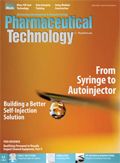News
Article
Pharmaceutical Technology
Deciding When To Use Modular Construction
Author(s):
Different types of modular systems have advantages and disadvantages.
GAVNI/GETTY IMAGES

Modular construction is a loose term used to define a number of different prefabrication strategies. In general, it is a technique of assembling components in a factory that, once completed, are transported to the construction site. The term is used to distinguish it from the traditional practice of field fabrication, where basic materials are assembled on site. Modular construction, however, is a term used indiscriminately to describe many unrelated approaches ranging from process/utility skids and pre-engineered, modular cleanroom wall systems up to the prefabrication of entire buildings. Using modularity or field fabrication directly impacts the design process, the construction cost, and even operations and their attendant costs. Understanding the advantages and disadvantages of different types of modular construction can contribute to a more informed decision.
The notion of modularity, by itself, is appealing. The idea of discrete, standardized components that can be assembled in different configurations offers benefits that are easy to imagine. Combining standard components in multiple ways symbolizes flexibility and scalability. It suggests an ability to increase capacity by merely plugging in new modules and the potential for reuse by removing and relocating existing modules. Fabrication in the controlled setting of a factory represents dependable, repeatable quality that reduces or even eliminates rework. In addition, it promises greater safety for the construction workers. The conditions within a factory also imply schedule benefits. Not being subject to the variable conditions found in the field-such as weather, difficult access, and inefficient sequencing-results in fewer delays. Finally, these attributes often combine, leaving the impression that modular design can reduce costs.
Due to the demands of the pharmaceutical industry, however, the ability to standardize has significant limitations. Every facility has process and installation conditions that demand special and often unique considerations. As a consequence, modular packages end up being “optimized”; for all intents and purposes they are designed to order. When facility changes become necessary, plug-and-play is not the only scenario. Over time, changes to the prefabricated components themselves will be required. The reality is, due partially to the tight tolerances afforded by assembly in a factory, prefabricated components can be difficult and expensive to modify once in the field. On a direct capital comparison, modular construction usually represents greater initial costs. When there is savings, it is usually not found in the first cost, but in associated costs such as operational or validation savings.
Equipment/process skids
Probably coming closest to meeting the ideals imagined for modular design is the skid mounting of various process and utility equipment. Most tank, valve, and pump-based operations can be skid mounted. Some examples include various process components, clean-in-place/sterilize-in-place systems, valve clusters, and cleanroom utilities. To fit on a skid, all components need to be installed within a defined footprint. This type of installation requires careful coordination to ensure there is adequate access for both operations and maintenance activities. Too tight a footprint can result in a contorted configuration. Valves and components may be oddly located and difficult to access, hindering operations and maintenance activities. Provided the plan allows enough space, discrete unitized skids can be quickly and easily installed and capacity readily expanded. The efficient layout, build quality, and space efficiencies provided by skidded equipment can be well worth the additional cost.
Similar to equipment skids, but different in level of integration, is modularized equipment. This approach uses multiple packaged units that are assembled to operate in parallel or series and can be expanded by plugging in additional units. This approach is readily applied to boilers, compressors, vacuum pumps, etc., and it can be a good choice when a facility has expectations for future expansion. While the cost for a modular system will be higher than a similar sized conventional unit, it is still less than buying a single unit that is oversized for an anticipated future capacity. Such underutilized equipment operates inefficiently. Meanwhile, the future capacity may never arrive. If and when the need does arise, a modular system is expandable to meet the demand, and a high level of operating efficiency and built-in redundancy are achieved.
Modular cleanroom wall systems
Pre-engineered, modular cleanroom wall systems are designed specifically for GMP-compliant operations. The best systems provide an integrated system of walls and ceilings with a finish that is truly seamless. The cleanability of such smooth surfaces is unsurpassed. Wall thicknesses are less than traditional, field-assembled construction, being roughly half the thickness of drywall. In a large facility, these inches add up, and reasonable increases in usable space are possible. Utilities, however, do not fit well within the thickness of modular walls. Some systems are UL listed for the installation of power cabling, but other piped utilities are not accommodated as easily. Unlike drywall partitions, where larger studs can provide for most piping conditions, modular cleanroom walls require that chases be built for piped services.
Because these systems are designed to be demountable, there is potential for wall reconfiguration. Demounting and reinstalling prefabricated components generates little dust and is a much cleaner process than reconfiguring conventional walls, but the seamless integration of wall and ceiling makes this a more complicated undertaking. The modifications that seem to happen most relate to changes of equipment and their utilities. Cutting panels that are already installed requires a skilled and experienced technician to achieve a clean outcome. Unless one employs the panel installer, this is difficult to execute well.
With modular cleanroom systems, the advantages need to be weighed against the initial high cost. There are, however, potential tax advantages that can be considered. As tangible personal property, modular walls can be depreciated over a much shorter period than conventional construction.
Prefabricated buildings
Perhaps the pinnacle of modularity is buildings entirely composed of prefabricated modules. Such modular structures come in various forms. All of them, however, are integrated assemblies that join together to create facilities of significant size, housing multiple functions and pieces of equipment. Because they are transported over the road, their dimensions are limited. Fairly representative of the largest prefabricated unit is a typical 8-feet wide by 40-feet long intermodal container. While a temporary office might use a single unit, a pharmaceutical facility typically uses multiple units assembled side by side and often stacked one on top of another. In some cases, only the mechanical areas, such as penthouses and central utility plants, are modularized.
Besides the greater initial capital cost, perhaps the largest limitation is the relatively small dimension of the module. Comparatively, the structure of an 8- by 40-foot unit is nearly 75% smaller than a relatively typical 30- by 40-foot site-erected structural bay. The increased number of columns in a modular building can make the layout inefficient and may result in a larger footprint. There are many instances, however, where modular is a superior choice, such as for remote locations where the knowledge and skills to construct a sophisticated pharmaceutical facility are not readily available. Also, off-site fabrication allows overlapping activities, potentially shortening the construction schedule, particularly when commissioning and validation are considered.
Conclusion
On a first-cost basis, modular construction is more expensive than field fabrication. It impacts facility design and must be integrated early. However, in the right circumstance there are many benefits. The higher level of control in a factory setting provides dependable quality, worker safety, and reliable scheduling. Modularity can allow flexibility and future expansion. Higher capital costs can be offset by operational and even tax benefits. While not a panacea, modular construction can be a great choice to meet a facility’s needs, but only after a thorough review of the costs and benefits.
About the author
Eric Bohn is partner at JacobsWyper Architects, 1232 Chancellor St., Philadelphia, PA, 19107, tel: 215.985.0400.
Article DetailsPharmaceutical Technology
Vol. 40, No. 6
Pages: 45–46
Citation:
When referring to this article, please cite it as E. Bohn, " Deciding When To Use Modular Construction," Pharmaceutical Technology 40 (6) 2016.
Newsletter
Get the essential updates shaping the future of pharma manufacturing and compliance—subscribe today to Pharmaceutical Technology and never miss a breakthrough.






